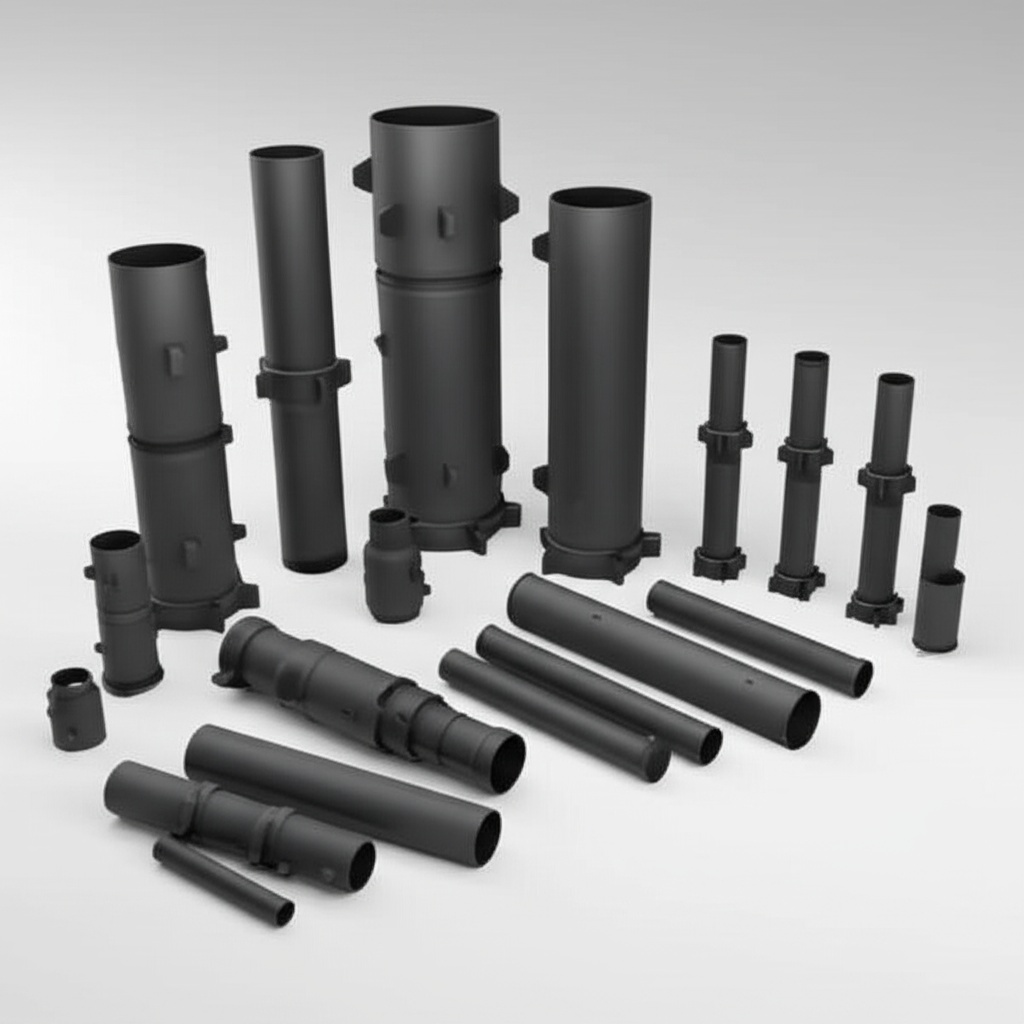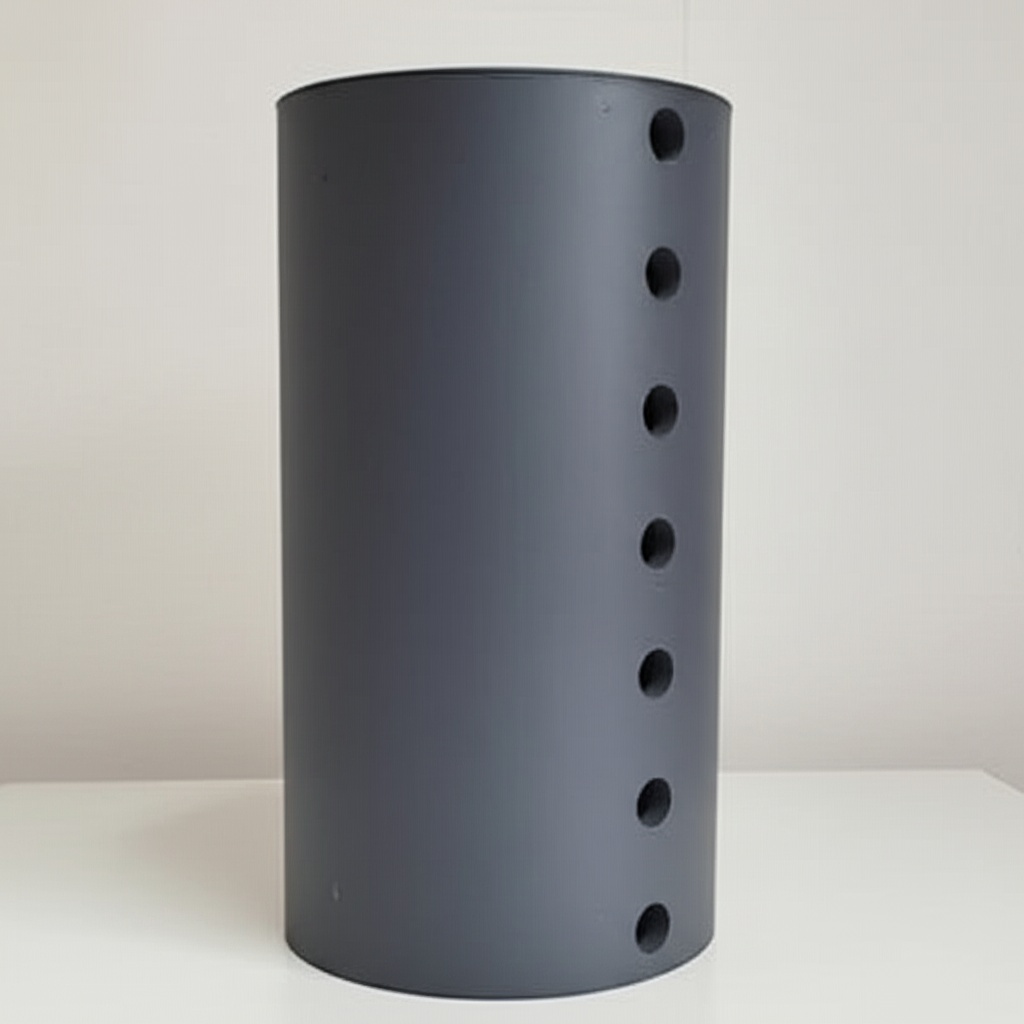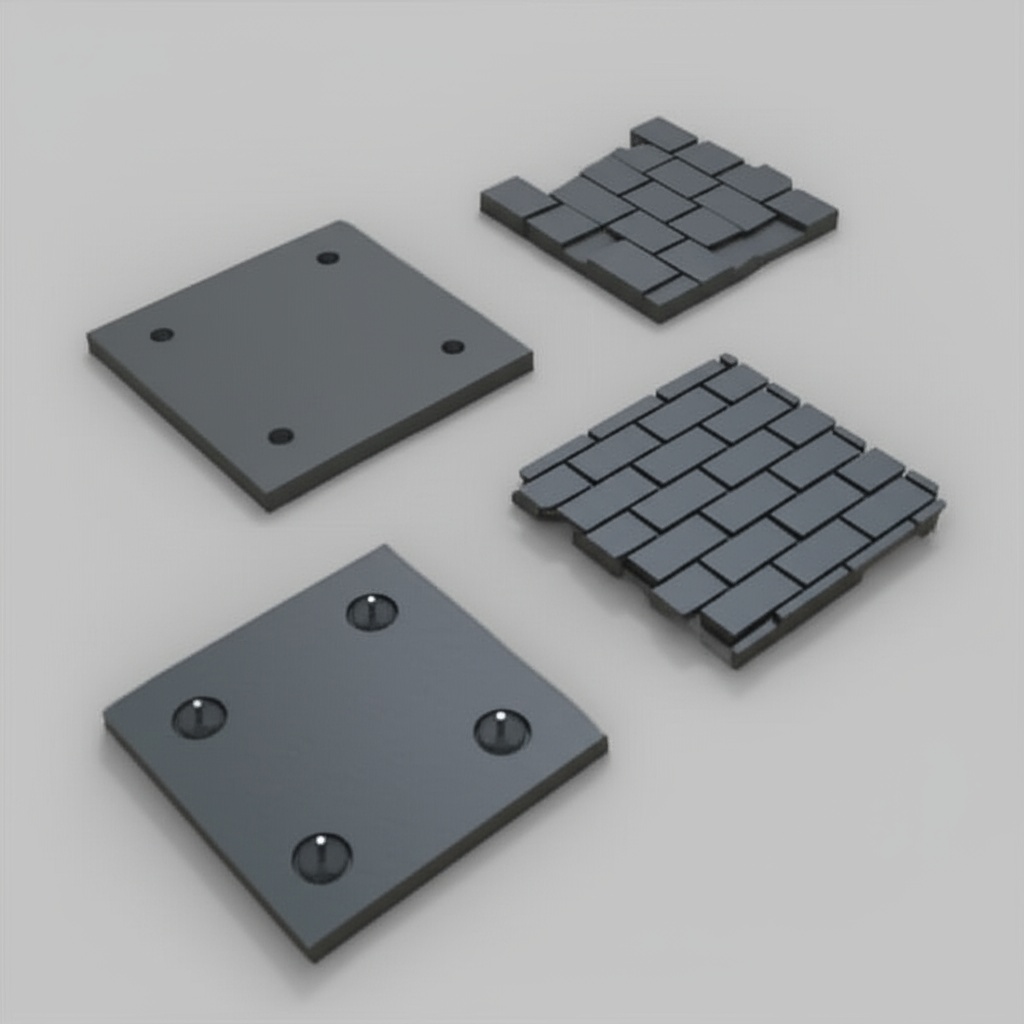Diody Schottky'ego z węglika krzemu (650–1700 V) do ultra-niskiego odzysku wstecznego w stopniach PFC i DC-DC

Udział
Wysokowydajne front-endy dla pakistańskiego przemysłu energetycznego w 2025 r.
Segmenty energochłonne w Pakistanie — hale tkalni, piece cementowe i stalowego linie walcownicze — zależą od niezawodnej, wydajnej konwersji AC-DC i DC-DC. Diody Schottky'ego z węglika krzemu (SiC) w klasie 650–1700 V zapewniają bardzo niski ładunek odzyskiwania wstecznego (Qrr≈0) i niskie napięcie przewodzenia (Vf), umożliwiając pracę z wysoką częstotliwością, mniejsze elementy magnetyczne oraz chłodniejsze i bardziej kompaktowe zasilacze. W 2025 r., gdy NEPRA/NTDC wprowadzi bardziej rygorystyczne wymagania dotyczące jakości energii elektrycznej, a taryfy przemysłowe wzrosną, modernizacja stopni PFC i DC-DC za pomocą diod SiC pomaga spełnić oczekiwania dotyczące harmonicznych IEEE 519, zmniejszyć straty i poprawić czas pracy w gorących, zapylonych środowiskach.
Sicarb Tech — z siedzibą w centrum SiC w mieście Weifang i wspierana przez Chińską Akademię Nauk — dostosowuje diody Schottky'ego SiC i zestawy aplikacyjne dla PFC, wzmacniaczy przeplatających się, prostowników Wiedeńskich, LLC/HB DC-DC i zasilaczy pomocniczych. Z ponad 10-letnim doświadczeniem w SiC i ponad 19 wdrożeniami w przedsiębiorstwach, dostarczamy części, projekty referencyjne i know-how w zakresie produkcji lokalizowalnej, aby przyspieszyć ścieżkę modernizacji.

Specyfikacje techniczne i zaawansowane funkcje
- Napięcia znamionowe: 650 V, 1200 V, 1700 V dla uniwersalnych sieci PFC i przemysłowych systemów wysokiego napięcia
- Prądy znamionowe: 6–60 A dyskretne; wyższe dzięki połączeniu równoległemu z dopasowanymi charakterystykami przewodzenia
- Ładunek odzyskiwania wstecznego (Qrr): Prawie zerowy (typowo kilka nC efektywne), minimalizujący straty przełączania i EMI
- Napięcie przewodzenia (Vf): Niskie (typowo 1,3–1,7 V przy prądzie znamionowym), zoptymalizowane pod kątem wydajności przy obciążeniach przemysłowych
- Temperatura złącza: -55°C do 175°C; odporność na wysokie temperatury otoczenia w Sindh i południowym Pendżabie
- Opcje obudowy: TO-220, TO-247, D2PAK/TO-263; warianty z pinem Kelvina dla dokładnego pomiaru prądu
- Umożliwienie częstotliwości przełączania: 50–200 kHz PFC; projekty stopni DC-DC 100–300 kHz
- Wydajność EMI/EMC: Zachowanie miękkiego odzyskiwania zmniejsza dzwonienie indukowane przez di/dt i pomaga spełnić wymagania IEC 61000-3-2/-3-12
- Niezawodność: Wysoka zdolność do wytrzymywania udarów; opcje ekranowania podobne do AEC-Q101 na żądanie do zastosowań krytycznych
- Współprojektowanie: Zoptymalizowane z tranzystorami MOSFET SiC i sterownikami bramek wysokiej temperatury dla w pełni szerokopasmowych front-endów
Zgodność i integracja:
- Jakość energii/harmoniczne: Cele na poziomie systemu IEEE 519, IEC 61000-3-2/3-12 dla urządzeń
- Normy bezpieczeństwa i konwerterów: IEC 62477-1; zastosowania PV/wiatrowe odnoszą się do IEC 62109
- Komunikacja przemysłowa (na poziomie systemu): Zgodność z zakładami wykorzystującymi SCADA IEC 61850/Modbus do monitorowania stanu termicznego diody w inteligentnych PSU (za pośrednictwem dodanych czujników)
Zalety wysokiej częstotliwości prostowania dla środowisk w Pakistanie
- Odporność na gorący klimat: Utrzymuje wydajność przy wysokiej Tj; zmniejsza obniżanie parametrów w temperaturze otoczenia >45°C
- Mniejsze elementy magnetyczne: Wyższe prędkości przełączania zmniejszają dławiki/transformatory — cenne w szafach modernizacyjnych
- Mniejsze obciążenie chłodzeniem: Zmniejszone straty przewodzenia i przełączania obniżają rozmiar radiatora i zużycie HVAC
- Lepszy czas pracy: Niższe naprężenia termiczne wydłużają żywotność komponentów w warunkach zapylenia cementowego i wilgotności nadmorskiej
- Szybka ścieżka zgodności: Czystsze przebiegi prądu pomagają zakładom osiągnąć cele harmoniczne w audytach użyteczności
Porównanie wydajności i parametrów termicznych dla front-endów PFC/DC-DC
| Rozważania projektowe | Front-end z diodą Schottky'ego SiC | Front-end z szybką/ultraszybką diodą krzemową | Wpływ na pakistańskie zakłady przemysłowe |
|---|---|---|---|
| Odzyskiwanie wsteczne (Qrr) | Prawie zero | Znaczący | Niższe straty przełączania i EMI; łatwiejsza zgodność |
| Częstotliwość przełączania | 50–200 kHz | 20–50 kHz | Mniejsze elementy magnetyczne; gęstsze półki mocy |
| Wydajność przy obciążeniu | +1,5–3,0% w porównaniu z Si | Linia bazowa | Niższe rachunki za energię; szybki zwrot przy wysokich taryfach |
| Margines termiczny | Wysoka (Tj do 175°C) | Umiarkowana (≤150°C) | Mniejsze obniżanie parametrów w gorącym klimacie, dłuższa żywotność |
| Rozmiar filtra EMI | Zredukowany | Większe | Mniejszy ślad BOM/szafy |
| Niezawodność (naprężenie) | Mniej cykli termicznych | Wyższe naprężenie | Mniej interwałów konserwacyjnych |
Kluczowe zalety i sprawdzone korzyści
- Oszczędność energii: 1,5–3,0% wzrost wydajności systemu w PFC/DC-DC przekłada się na znaczne roczne oszczędności PKR
- Kompaktowa konstrukcja: 20–30% redukcja objętości magnetycznej i chłodzenia dla tego samego poziomu mocy
- Szybszy czas uzyskania zgodności: Czystsze przebiegi pomagają spełnić wymagania IEEE 519 i lokalnych zakładów użyteczności
- Niższe koszty eksploatacji: Mniejsze chłodzenie i mniej zdarzeń przestojów w zapylonych/wilgotnych parkach przemysłowych
Cytat eksperta:
„Diody Schottky'ego SiC praktycznie eliminują odzyskiwanie wsteczne, umożliwiając front-endy o wyższej częstotliwości i wyższej wydajności ze zmniejszonym EMI — kluczowe dla kompaktowej, niezawodnej mocy przemysłowej”. — Kontekst zaadaptowany z czasopisma IEEE Power Electronics Magazine i przeglądów IEEE Transactions on Power Electronics (wgląd społeczności PELS)
Zastosowania w świecie rzeczywistym i wymierny sukces
- Zakłady włókiennicze (Faisalabad): Zmodernizowane stopnie PFC 50 kW z diodami SiC 1200 V. Wynik: +2,1% wydajności, 18% redukcji radiatora, 25% mniej wyzwalaczy zakłóceń VFD z powodu poprawionej jakości wejścia.
- Urządzenia pomocnicze w cementowni (KP): modernizacje SMPS/UPS 10–30 kW z wykorzystaniem SiC Schottky'ego 650 V w przeplatanym PFC. Wynik: 1,8% oszczędności energii i 12°C niższa temperatura obudowy urządzenia w temperaturze otoczenia 45°C.
- Ponowne walcowanie stali (Karaczi): diody SiC 1700 V w ładowarkach DC link wysokiego napięcia. Wynik: THDi poprawiony w kierunku celu, filtr EMI zmniejszony o 20%, poprawiony czas pracy podczas operacji EAF.
- Serwis falowników PV (Sindh): front-end prostownika Wiedeńskiego z diodami SiC 1200 V. Wynik: >98% wydajności front-endu, łatwiejsza zgodność z zakładami użyteczności, zmniejszona liczba incydentów ograniczeń.

Rozważania dotyczące wyboru i konserwacji
- Zapas napięcia: Wybierz 650 V dla uniwersalnego AC (PFC), 1200 V dla przemysłowych systemów wysokiego napięcia, 1700 V dla systemów połączonych ze średnim napięciem
- Prąd znamionowy i ścieżka termiczna: Obniż parametry dla otoczenia >45°C; zapewnij solidny radiator lub płaszczyzny miedziane; wybór TIM ma znaczenie
- Układ/EMI: Krótkie pętle diodowe; w razie potrzeby tłumiki RC; optymalizacja dławika w trybie różnicowym przy wyższych częstotliwościach przełączania
- Przepięcia i stany nieustalone: Sprawdź znamionowe prądy udarowe; koordynuj z MOV/TVS i filtrami wejściowymi
- Praca równoległa: Rozkład prądu poprzez symetrię układu i równoważenie termiczne
Czynniki sukcesu w branży i referencje klientów
- Zlokalizowane wsparcie inżynieryjne dla szybkiej kwalifikacji i prototypowania
- Dokumentacja zgodna z potrzebami zgłoszeniowymi NTDC/NEPRA
- Szkolenia dla zespołów konserwacyjnych w celu bezpiecznego wykorzystania korzyści wysokiej częstotliwości
Głos klienta (zbiorczy):
„Po zastosowaniu diod Schottky'ego SiC w naszym PFC, szafy działają chłodniej, a nasz audyt harmonicznych przeszedł za pierwszym razem”. — Kierownik ds. konserwacji elektrycznej, klaster włókienniczy, Pendżab
Przyszłe innowacje i trendy rynkowe (2025+)
- Nowe generacje diod SiC o wyższym prądzie i niskim Vf, jeszcze bardziej redukujące straty przewodzenia
- Zintegrowane SiC MOSFET + Schottky dla ultrakompaktowych układów wejściowych
- Hybrydowe stopnie GaN/SiC w zakresie niskich i średnich mocy z cyfrowym sterowaniem PFC dla jeszcze lżejszych elementów magnetycznych
- Lokalny montaż i możliwości testowania w Pakistanie poprzez transfer technologii w celu skrócenia czasu realizacji i ograniczenia ekspozycji na waluty obce
Najczęściej zadawane pytania i odpowiedzi ekspertów
- Czy diody SiC Schottky zmniejszają EMI w stopniach PFC?
Tak. Bliskie zeru Qrr zmniejsza skoki prądu i dzwonienie indukowane przez dv/dt, obniżając złożoność filtra EMI. - Jakich korzyści w zakresie wydajności możemy się spodziewać w PFC o mocy 10–50 kW?
Zazwyczaj +1,5–3,0%, w zależności od topologii i częstotliwości — często wystarczająco, aby osiągnąć zwrot z inwestycji w czasie <24–30 miesięcy. - Czy wytrzymają wysokie temperatury otoczenia i zapylenie?
Diody SiC działają w temperaturze do 175°C Tj; przy odpowiednim chłodzeniu i obudowach o stopniu ochrony IP, działają niezawodnie w temperaturze >45°C i w zapylonych miejscach. - Czy są one zamiennikami typu drop-in dla szybkich diod krzemowych?
Elektrycznie, często tak — układ i tłumiki mogą być ponownie zoptymalizowane, aby wykorzystać wyższą częstotliwość i zmniejszyć EMI. - Które topologie odnoszą największe korzyści?
Interleaved boost PFC, prostowniki Wiedeńskie, PFC typu totem-pole (z MOSFET-ami SiC) i wysokiej częstotliwości LLC/HB DC-DC prostowanie.
Dlaczego to rozwiązanie działa w Twoich operacjach
Diody SiC Schottky atakują straty, ciepło i rozmiar w wąskim gardle prostowania — dokładnie tam, gdzie pakistańskie konwertery przemysłowe potrzebują pomocy. Poprzez ograniczenie odzyskiwania wstecznego i umożliwienie wyższych częstotliwości, odblokowują one mniejsze, chłodniejsze, bardziej zgodne z przepisami urządzenia energoelektroniczne, które zwiększają czas pracy i obniżają całkowity koszt posiadania.
Połącz się ze specjalistami, aby uzyskać niestandardowe rozwiązania
Przyspiesz modernizację z Sicarb Tech:
- Ponad 10 lat doświadczenia w produkcji SiC w centrum SiC w Weifang
- Wspierane przez Chińską Akademię Nauk w celu szybkiej innowacji
- Niestandardowy rozwój produktów w zakresie materiałów R-SiC, SSiC, RBSiC, SiSiC oraz platform dyskretnych/modułowych
- Transfer technologii i usługi zakładania fabryk — od wykonalności po uruchomienie
- Kompleksowe rozwiązania od materiałów i podłoży po gotowe zespoły PFC/DC-DC
- Sprawdzone wyniki z ponad 19 przedsiębiorstwami w wymagających branżach
Uzyskaj bezpłatną konsultację, audyt PFC/DC-DC i model ROI dostosowany do Twojego zakładu.
Email: [email protected] | Phone/WhatsApp: +86 133 6536 0038
Metadane artykułu
- Ostatnia aktualizacja: 2025-09-11
- Następna zaplanowana aktualizacja: 2025-12-15
- Przygotowane przez: Zespół inżynierów ds. zastosowań Sicarb Tech
- Odniesienia: IEEE 519; IEC 61000-3-2/-3-12; IEC 62477-1; NTDC/NEPRA praktyki w zakresie wzajemnych połączeń i audytu; IEEE Power Electronics Magazine i recenzje IEEE TPEL dotyczące diod SiC i projektowania PFC

About the Author: Sicarb Tech
We provide clear and reliable insights into silicon carbide materials, component manufacturing, application technologies, and global market trends. Our content reflects industry expertise, practical experience, and a commitment to helping readers understand the evolving SiC landscape.




